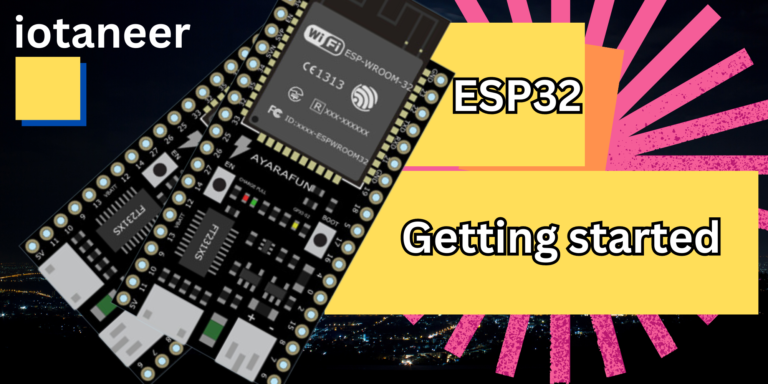When it comes to developing IoT projects and embedded systems, the choice of microcontroller can greatly influence the outcome of your project. Two popular options that often come into consideration are the ESP32 and the ESP8266. In this article, we’ll compare these two microcontrollers in terms of their features, capabilities, and use cases to help you make an informed decision for your next project.
Introduction to ESP32 and ESP8266
Before diving into the comparison, let’s briefly introduce the ESP32 and ESP8266.
ESP32: Power and Versatility
The ESP32, developed by Espressif Systems, is a dual-core microcontroller that offers built-in Wi-Fi and Bluetooth capabilities. Its powerful processing capabilities and extensive set of features make it suitable for a wide range of applications, from IoT projects and home automation to wearables and industrial solutions.
ESP8266: Pioneering IoT Connectivity
The ESP8266, also developed by Espressif Systems, was one of the first microcontrollers to bring affordable Wi-Fi connectivity to the IoT world. It offers a single-core processor and is known for its simplicity, making it an attractive choice for entry-level projects and applications where Wi-Fi connectivity is the primary requirement.
Feature Comparison
Processing Power
The ESP32 shines in terms of processing power. With its dual-core architecture and higher clock speeds, it’s better equipped to handle complex tasks and multitasking. This is especially advantageous for applications that require real-time data processing, such as robotics or audio processing.
The ESP8266, on the other hand, has a single-core processor and is generally more suited for simpler applications that don’t demand extensive processing capabilities.
Wi-Fi and Bluetooth
Both the ESP32 and ESP8266 offer Wi-Fi connectivity, but the ESP32 takes it a step further with its support for both 2.4 GHz and 5 GHz Wi-Fi bands. This can be particularly useful in environments with crowded Wi-Fi networks, as it provides more flexibility to choose a less congested frequency.
In terms of Bluetooth capabilities, the ESP32 has built-in support for both Classic Bluetooth and Bluetooth Low Energy (BLE). This makes it suitable for applications that require wireless communication with a variety of devices, such as smartphones, tablets, and other IoT nodes.
GPIO Pins and I/O Options
The ESP32 offers more GPIO pins compared to the ESP8266, providing greater flexibility when connecting multiple sensors, actuators, and peripherals. Additionally, the ESP32 supports a wider variety of input and output options, including analog inputs, PWM outputs, and more.
While the ESP8266 has fewer GPIO pins, it’s still capable of handling many basic projects that don’t require an extensive number of connections.
Power Consumption
The ESP8266 tends to have lower power consumption compared to the ESP32, making it suitable for battery-powered applications where energy efficiency is crucial. However, the ESP32 provides power-saving features, such as a deep sleep mode, that can help mitigate power consumption concerns.
Use Cases
ESP32 Use Cases
- IoT Applications: The ESP32’s powerful processing and wireless capabilities make it an excellent choice for complex IoT projects that require real-time data processing and connectivity.
- Home Automation: With its Bluetooth and Wi-Fi capabilities, the ESP32 is well-suited for home automation systems that involve controlling smart devices and sensors.
- Wearable Technology: The ESP32’s compact size and wireless features make it a great fit for wearable devices, such as fitness trackers and smartwatches.
ESP8266 Use Cases
- Basic IoT Projects: The ESP8266’s simplicity and affordability make it a popular choice for beginner-friendly IoT projects, such as temperature and humidity monitoring.
- Connected Devices: It’s suitable for projects that primarily require Wi-Fi connectivity, such as remote control applications and basic data reporting.
- Prototyping: The ESP8266’s lower cost and ease of use make it an ideal choice for prototyping and experimentation.
Conclusion
In the battle of ESP32 vs. ESP8266, there’s no one-size-fits-all answer. Your choice depends on the specific requirements of your project. If you’re looking for a microcontroller with robust processing power, dual-core architecture, and extensive connectivity options, the ESP32 is your go-to choice. On the other hand, if you’re aiming for simplicity, affordability, and basic Wi-Fi connectivity, the ESP8266 might be the better fit.
Ultimately, both microcontrollers have contributed significantly to the world of IoT development, providing accessible options for a wide range of projects. By understanding the strengths and weaknesses of each, you can confidently select the microcontroller that aligns with your project’s goals and requirements.






